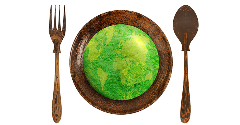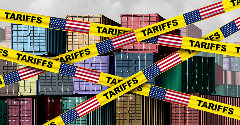News
China needs maximum sodium targets for packaged foods, say researchers
8 Feb 2024Packaged and processed foods now contribute to nearly one-third of Chinese people’s sodium intake, prompting researchers to call for maximum sodium reduction targets for manufacturers.
A high sodium intake is associated with metabolic health problems, including high blood pressure, an increased risk of cardiovascular diseases, and other chronic conditions. Past research has shown that excessive sodium intake led to 1.7 million deaths in China in 2017.

In China, the average salt intake is 11 g per day – more than twice the 5 g daily intake that is recommended by the World Health Organization (WHO). While around 80% of people’s sodium intake comes from table salt and condiments added during cooking, packaged and processed foods have become increasingly prominent in the Chinese diet in recent years.
With this in mind, the scientists behind this study combined nutrition data from 51,803 packaged food products with food consumption data from 15,670 Chinese adults to determine current intake and the potential impact of different reduction targets.
Biggest contributors: Soy sauce, condiments, and ready-to-eat meals
Publishing their findings in the WHO Bulletin, they found that processed foods provide adults with 1,302.5 mg of sodium each day, equivalent to 3.3 g of salt, or 30.1% of an adult’s daily sodium intake.
They also calculated that maximum sodium content levels based on revised WHO 20% reduction targets would result in “substantial and acceptable reductions in sodium content for most food subcategories,” reducing sodium intake by an estimated 305 mg/day per person. Overall population intake would fall by 6.1%.
“This study provides the scientific rationale for government policy on setting targets for food sodium content in China,” wrote the team of researchers, led by Professor Puhong Zhang, associate director at the George Institute for Global Health, China, and lead author of the study. “Simultaneous action on discretionary salt use should also be taken,” Zhang added.
Soy sauce and fish sauce contributed most to sodium intake (accounting for 47.3% of the 1,302.5 mg/day from all pre-packaged foods), followed by ready-to-eat meals, butter, margarine, and oil-based spreads.
Industry reformulation ‘easier’ than changing people’s cooking habits
The Chinese government implemented a national salt reduction programme in 2016 – mostly targeting households – that has successfully led to a significant reduction in household salt use. However, the researchers would like to see more efforts from the food industry.
Zhang called for a strengthening of reformulation strategies.
“… our study has shown that the contribution of pre-packaged food contributes to salt intake has grown and its market share is increasing. Considering that harnessing the food industry’s capacity to reduce salt in its products is much easier and more sustainable than changing people’s cooking and dietary behaviour, we strongly suggest deepening action on salt by simultaneously implementing sodium target-setting in China.”
Professor Huijun Wang from the National Institute for Nutrition and Health, Chinese Centre for Disease Control and Prevention, and co-author of the WHO Bulletin study said that global experience has proved industrial reformulation of processed products through target-setting is “a key solution” to lower the sodium intake.
“To start with the policy in China, the revised 20%-reduction targets could be a good choice because these targets can help push the reformulation of products with relatively high sodium content and guarantee substantial sodium content reduction, which may not be noticed by consumers and should be acceptable by most companies,” she added.
Food manufacturers selling products in China are required by law to list the sodium content on packaged food products’ labelling but there is no official regulation to incentivise the industry to reduce salt use, wrote the researchers in the WHO Bulletin study.
While a set of voluntary sodium targets were included in the Guideline for Salt Reduction for the Chinese Food Industry, published in 2019, the recommended mean and maximum levels were calculated based on data from only 9,000 food products, they noted, making it of limited use.
Related news

NMN: An on-trend ‘fountain of youth’ ingredient for anti-ageing products
24 Oct 2025
Dubbed an “on-trend fountain of youth ingredient” by Mintel, NMN is booming in anti-ageing ingestible products in Asia – but regulatory roadblocks are thwarting NPD efforts elsewhere, say experts.
Read more
Food security-insecurity gap grows, hitting vulnerable regions hardest
16 Oct 2025
While food security has increased in most countries, the world’s most vulnerable nations’ struggles continue and intensify, a USDA analysis reveals.
Read more
India’s biscuit and cookie consumers want extra indulgence
16 Sep 2025
Premiumisation, health consciousness, and a focus on texture are driving new product developments (NPD) in the Indian biscuit and cookie market, Mintel figures suggest.
Read more
Climate change threatens matcha supplies as social media fuels matcha mania
8 Sep 2025
Matcha’s popularity is rising across the globe, yet shrinking harvests caused by record-breaking heatwaves in Japan are dwindling global supplies.
Read more
Australia's snacking sector achieves near-universal appeal
22 Aug 2025
As many as 99% of Australian consumers snack daily, with generational differences and increasing demands presenting novel manufacturing opportunities, according to Mintel data.
Read more
World Food Safety Day shines a spotlight on science
19 Jun 2025
On 7 June, the World Health Organization (WHO) held its annual World Food Safety Day, highlighting the role scientific research and innovation play in supporting consumers’ health.
Read more
Africa and Middle East most vulnerable markets to food fraud
28 May 2025
Consumers in Africa and the Middle East face a higher risk of consuming adulterated foods – especially with tariffs causing chaos in the global food supply chain, experts warn.
Read more
East takes on West in the fight for future food flavours
30 Apr 2025
Asian and South American flavours are now key components on global menus, driven by a growing global appetite for culinary mashups.
Read more
Will Trump lower tariff hikes?
25 Apr 2025
The US President’s plan to reduce the 145% tariffs on China’s food and beverage market raises questions over whether a turnaround is likely for other regions.
Read more
Future F&B flavours favour exploration and explosive taste profiles
25 Mar 2025
Exploration and experimentation will define the future of flavour, according to Mintel, as consumers seek out taste profiles and textures that offer an adventurous eating experience.
Read more